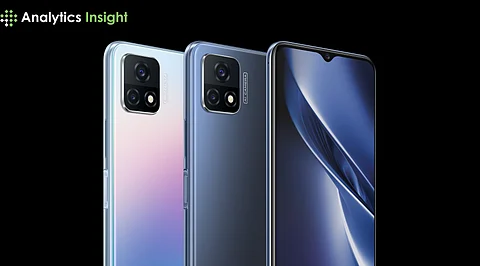

Whether for gaming, streaming, or multitasking, the iQOO U3 and the Samsung Galaxy S9 deliver performance that powers through the most intense applications, but which one of these devices is truly superior? Let’s have a comparative glance at both of them.
In 2025, the smartphone market witnessed newer models with advanced features and improved performance. Budget-conscious consumers often give preference to older models still working fine. Two such choices are the iQOO U3 and the Samsung Galaxy S9. This piece brings out a detailed comparison of the two to see which one shall be a better buy in 2025.
iQOO U3: Launched in December 2020, the iQOO U3 sported a modern design with a 6.58-inch IPS LCD screen that provides a 90Hz refresh rate for smooth visuals. The phone comes with a plastic back and frame, keeping it lightweight at 185.5 g. It measures 164.2 x 75.4 x 8.4 mm, making it quite comfortable for holding and usage.
Samsung Galaxy S9: Released in March 2018, the Galaxy S9 enjoys a premium design with aluminum sides and Gorilla Glass 5 on the front and back. It is equipped with a 5.8-inch Super AMOLED display with a resolution of 1440 x 2960 pixels, featuring vibrant colors and one of the deepest blacks. The phone is compact and weighs just 163 grams, with dimensions of 147.7 x 68.7 x 8.5 mm.
Verdict: The Galaxy S9, with its premium build and high-resolution display, is in stark contrast to the iQOO U3, which has a bigger screen with a higher refresh rate. So, the choice comes down to build quality and display resolution vs. screen size and refresh rate.
iQOO U3: iQOO U3 is powered by the MediaTek Dimensity 800U chipset, with support for 5G networks that provide utmost efficiency for daily tasks and casual gaming. There are options of either 6GB or 8GB RAM with 128GB of internal storage, lacking a microSD card slot for further expansion.
Samsung Galaxy S9: Galaxy S9 runs on Qualcomm Snapdragon 845(USA) or Exynos 9810(Other regions), both flagship processors at the time. The phone supports 4GB RAM and internal storage choices of 64GB, 128GB, or 256GB, with further microSD card support.
Verdict: While being 2018-highest-tier processors, the Galaxy S9 is less efficient and offers no 5G concerning the very new chipset of iQOO U3. However, the Galaxy S9 supports expandable storage, while the iQOO U3 does not.
iQOO U3: It has a dual-camera setup with a 48MP primary sensor and a 2MP depth sensor. It supports 4K video recording at 30fps and has a standard camera interface to assist with casual photography.
Samsung Galaxy S9: With a rear 12MP camera with variable aperture (f/1.5-2.4), the Galaxy S9 performed better in conditions of varying light. It supports 4K video recording at 60fps and super slow-motion video at 960fps. The front camera is 8MP, good for selfie quality and video calling.
Verdict: The Galaxy S9 offers superior camera capabilities, with features like variable aperture and higher frame rate video recording, making it a better choice for photography enthusiasts.
iQOO U3: Equipped with a 5000mAh battery, the iQOO U3 provides extended usage time, easily lasting a full day or more under moderate use. It supports 18W fast charging, allowing for relatively quick recharge times.
Samsung Galaxy S9: The Galaxy S9 has a 3000mAh battery, which may struggle to last a full day with heavy use. It supports 15W fast charging and wireless charging, offering more flexibility in charging options.
Verdict: The iQOO U3 offers better battery life, while the Galaxy S9 provides the convenience of wireless charging. Users must decide between longer battery life and charging flexibility.
iQOO U3: The device launched with Android 10 and iQOO UI 1.5. As of 2025, it may not receive significant software updates, potentially limiting access to the latest Android features and security patches.
Samsung Galaxy S9: Initially released with Android 8.0 Oreo, the Galaxy S9 received updates up to Android 10 with One UI 2.5. Samsung's update policy has improved in recent years, but the S9 is unlikely to receive further updates.
Verdict: Both devices are unlikely to receive major software updates in 2025. However, the Galaxy S9's software may offer a more polished experience due to Samsung's refined One UI.
iQOO U3: Supports 5G connectivity, dual SIM, and includes a side-mounted fingerprint sensor. It lacks a headphone jack and microSD card slot.
Samsung Galaxy S9: Offers 4G LTE connectivity, a rear-mounted fingerprint sensor, an iris scanner, and retains the 3.5mm headphone jack. It also includes microSD card support for storage expansion.
Verdict: The iQOO U3 provides faster network speeds with 5G support, while the Galaxy S9 offers more versatility with additional features like the headphone jack and expandable storage.
iQOO U3: As a newer device, the iQOO U3 is more readily available in the market, especially in regions where Vivo has a strong presence. Its price point is budget-friendly, offering good value for its features.
Samsung Galaxy S9: Being an older model, the Galaxy S9 may be harder to find new, but refurbished units are available at lower prices. Its premium build and features may still appeal to certain users.
Verdict: The iQOO U3 offers better availability and value for money, while the Galaxy S9 may appeal to those seeking a premium device at a reduced cost.
In 2025, the iQOO U3 and Samsung Galaxy S9 both present compelling options for budget-conscious consumers. The iQOO U3 stands out with its larger battery, 5G support, and modern design, making it suitable for users seeking longevity and faster connectivity. Conversely, the Galaxy S9 offers a premium build, superior camera capabilities, and additional features like wireless charging and expandable storage. The choice between the two depends on individual priorities, such as battery life and network speed versus camera performance and build quality.
